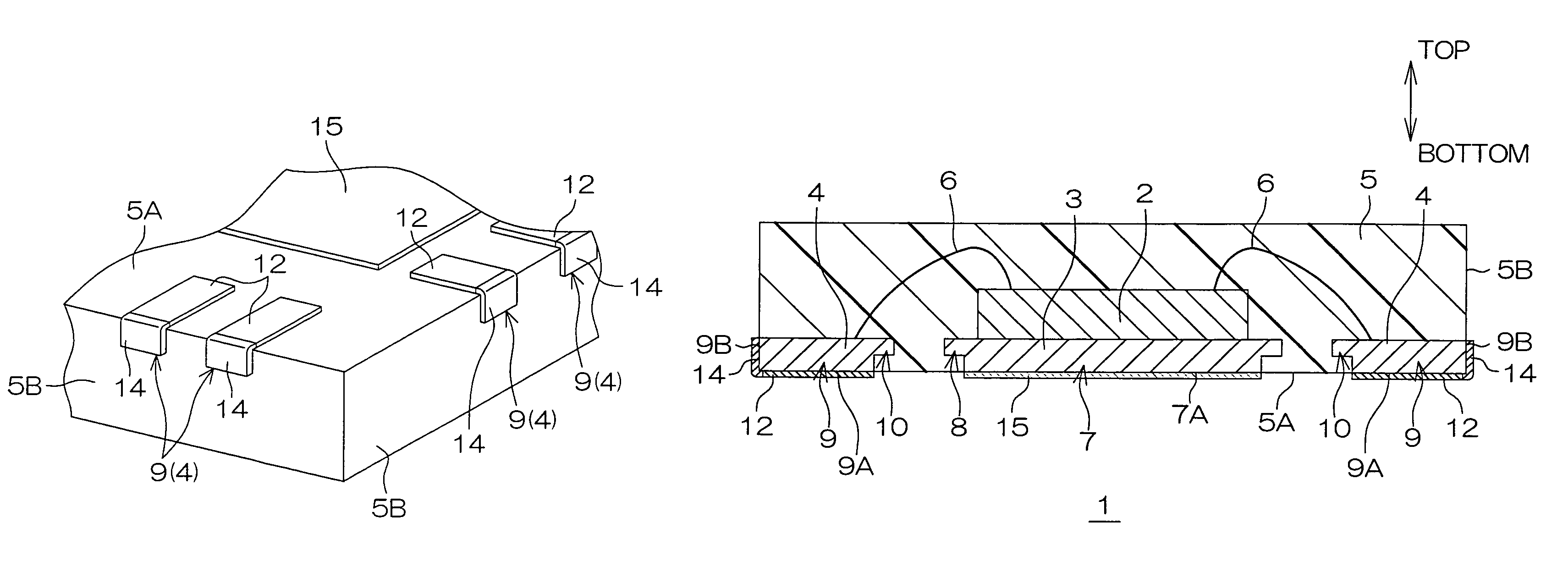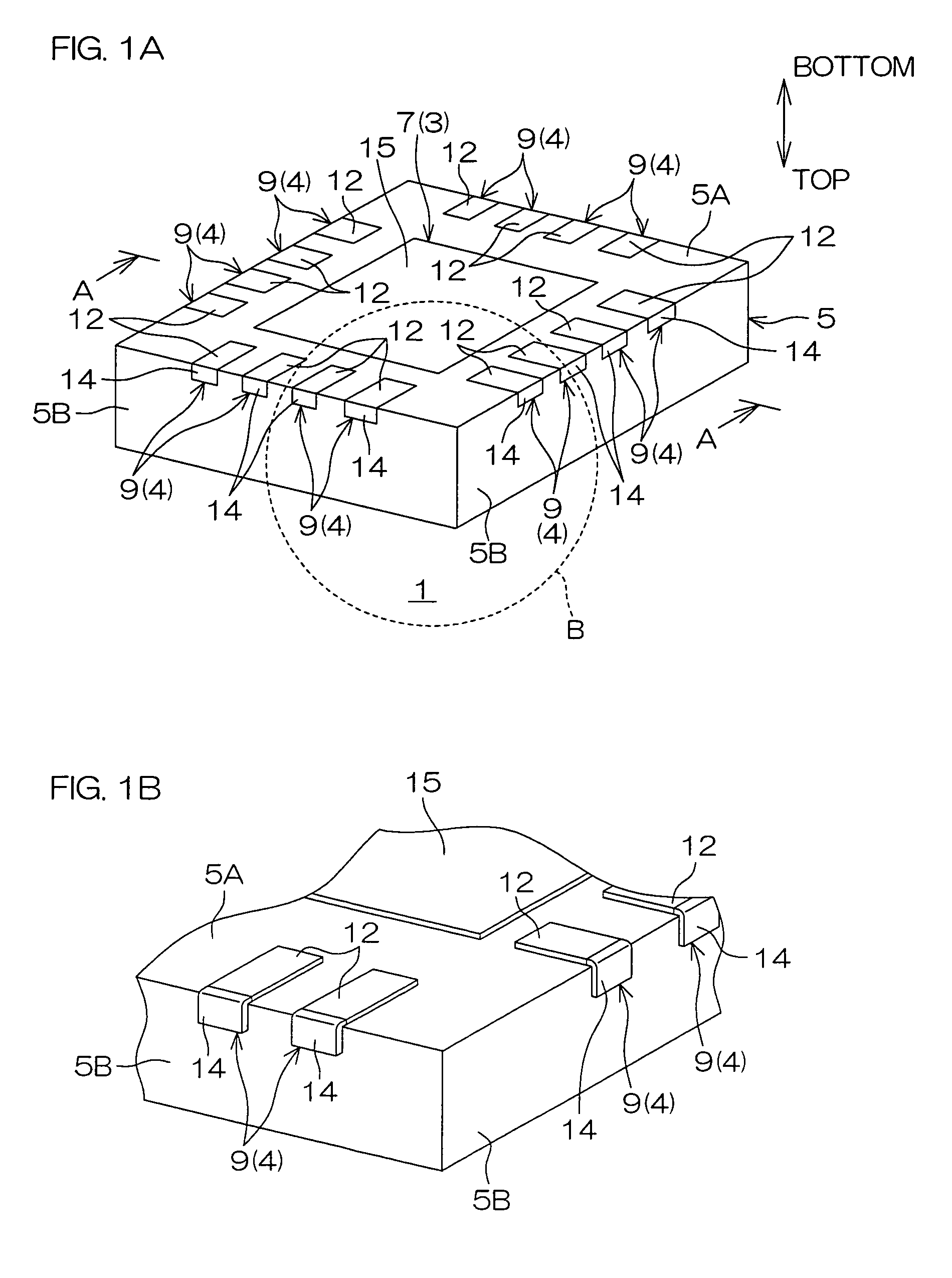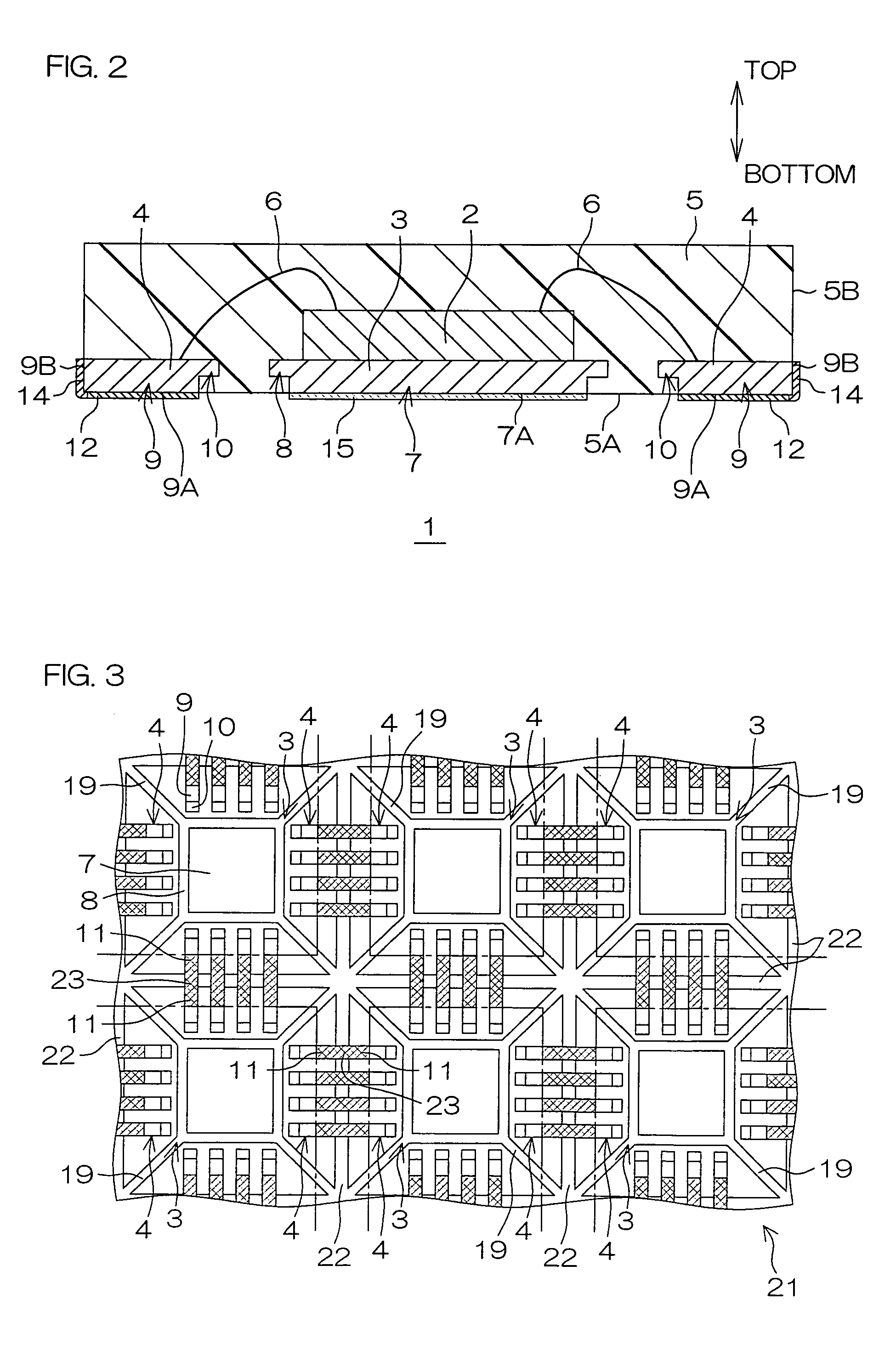Semiconductor device and method of manufacturing semiconductor device
a semiconductor device and semiconductor technology, applied in the direction of sustainable manufacturing/processing, final product manufacturing, printed circuit aspects, etc., can solve the problems of oxidized solder provided on the package board (land), disadvantageous oxidation of bare copper, and difficulty in wetting the solder on the end surface,
- Summary
- Abstract
- Description
- Claims
- Application Information
AI Technical Summary
Benefits of technology
Problems solved by technology
Method used
Image
Examples
Embodiment Construction
[0034]FIG. 1A is a schematic perspective view of a semiconductor device 1 according to an embodiment of the present invention as viewed obliquely from above. FIG. 1B is an enlarged view of a part of the semiconductor device 1 surrounded by a broken circle B in FIG. 1A. FIG. 2 is a schematic sectional view of the semiconductor device 1 taken along the line A-A in FIG. 1A.
[0035]A QFN is applied to the semiconductor device 1. This semiconductor device 1 includes a semiconductor chip 2, a die pad 3 supporting the semiconductor chip 2, a plurality of leads 4 electrically connected with the semiconductor chip 2 and sealing resin 5 sealing these elements.
[0036]The semiconductor chip 2 is die-bonded onto the die pad 3 while directing the surface (device forming surface) provided with functional elements upward. A plurality of pads (not shown) are formed on the surface of the semiconductor chip 2 by partially exposing a wiring layer from a surface protective film. The respective pads are ele...
PUM
 Login to View More
Login to View More Abstract
Description
Claims
Application Information
 Login to View More
Login to View More - R&D
- Intellectual Property
- Life Sciences
- Materials
- Tech Scout
- Unparalleled Data Quality
- Higher Quality Content
- 60% Fewer Hallucinations
Browse by: Latest US Patents, China's latest patents, Technical Efficacy Thesaurus, Application Domain, Technology Topic, Popular Technical Reports.
© 2025 PatSnap. All rights reserved.Legal|Privacy policy|Modern Slavery Act Transparency Statement|Sitemap|About US| Contact US: help@patsnap.com



